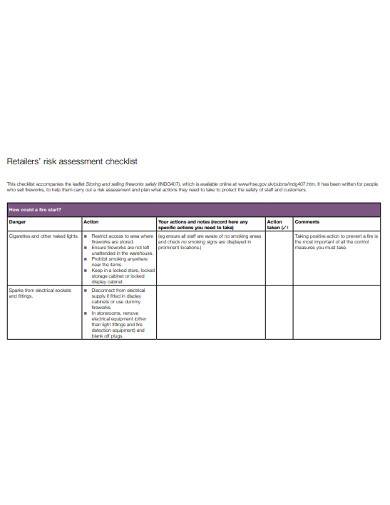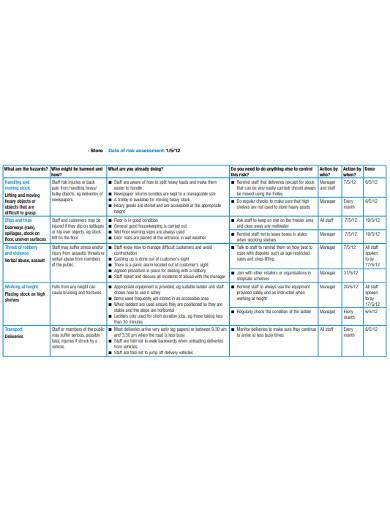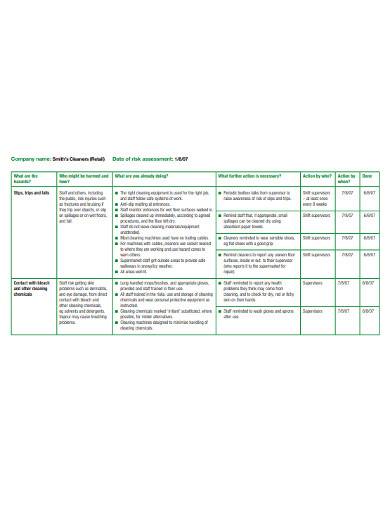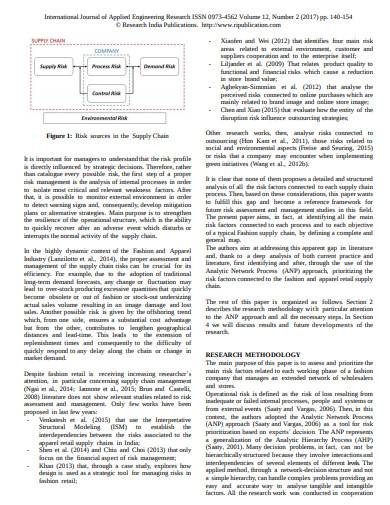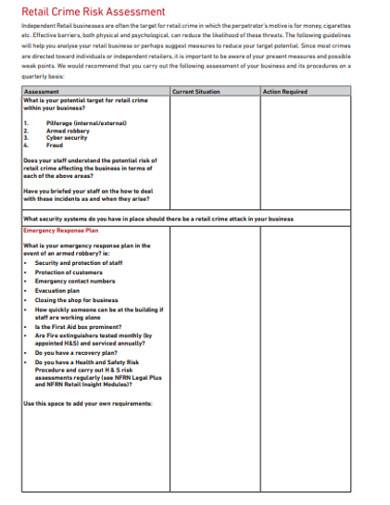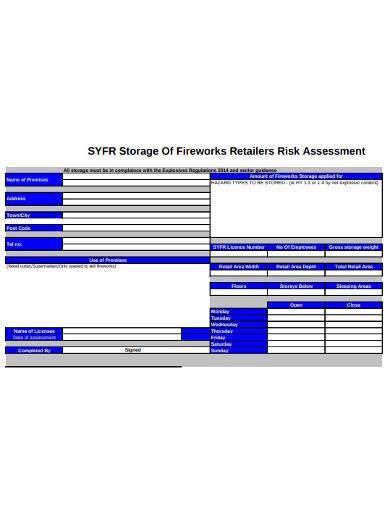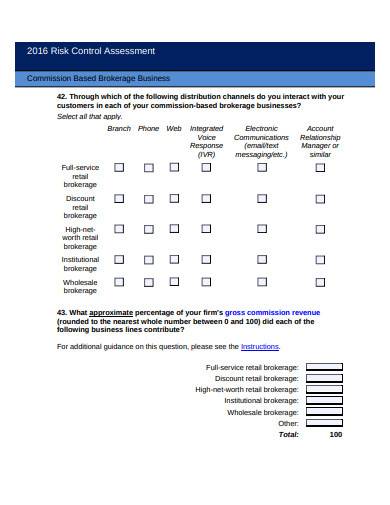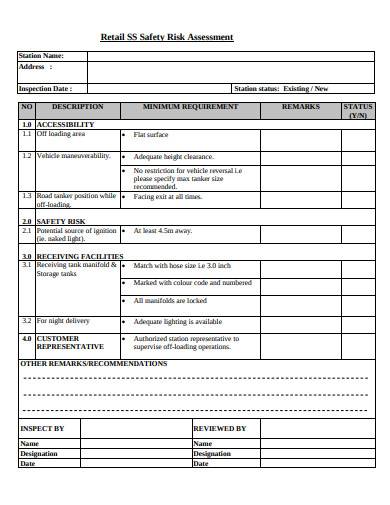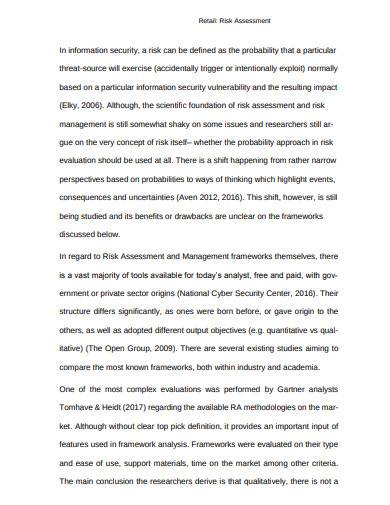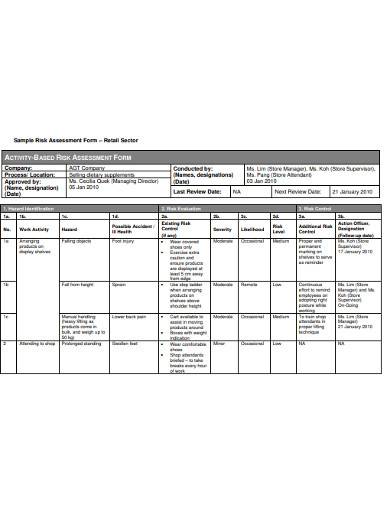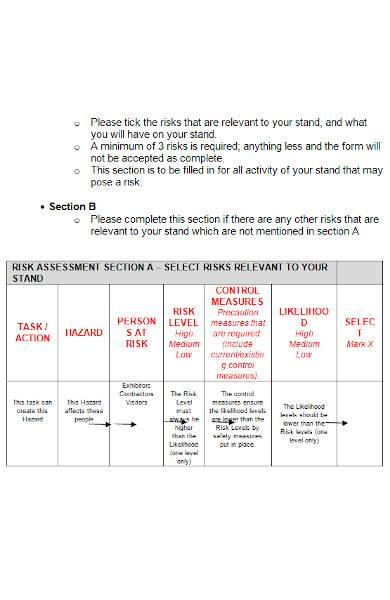Though the success stories of new ideas and backyard gimmicks turning into phenomenons are heart-warming, sad tales of failure aren’t exactly uncommon as well. As a matter of fact, starting up a small business is incredibly risky in this day and age. It’s like walking on a tight rope with an open fire pit at the bottom: one wrong move and it could all crash down only to come back up in flames. As such, both major corporations and small retail shops should learn the value of risk analysis and assessment to keep their assets from turning into ashes.
What Is a Retail Risk Assessment?
There is no question that people want to keep themselves and their businesses safe and protected. Because of this, various hospitals and insurance agents advertise security from risk to the masses like it’s a revolutionary technological advancement. Unfortunately, the facade of being “truly safe” is a lot like glass: difficult to create yet easy to shatter. In the business world, various threats exist that can easily topple both a small family store and a well-recognized establishment. These dangers range from the blatantly obvious such as crimes and natural disasters to the more discrete assassins such as sabotage and being outcompeted for the same resources.
One thing retail businesses—small and large alike—can take away from the business plans of major brands and corporations is their utilization of risk assessment. Risk assessment involves theory-crafting possible threats and hazards present in your status quo and then formulating preventive measures, safety procedures, and operating systems. Though this is undoubtedly tedious work, preparing ahead of time before these risks even occur will save you, your staff, and your business in the long run.
The Unseen Blade
“The unseen blade is the deadliest,” is a quote that shrouds itself in vagueness and is uttered by an equally shadowy figure. References aside, the heft of the words cut deep if you understand their connotative meaning. It’s not always the obvious dangers that bring you down, but the ones you least expect. Think of corporate sabotage, a change in the market’s needs that you can’t cope with, or accumulating nothing but negative reviews on online forums. Hence, effective retail risk management requires you to go beyond the surface and search for the “unseen blades” that can shut down your business faster than any natural disaster or security breach.
10+ Retail Risk Assessment Samples
Various documents exist that help you in your retail risk assessment. From checklists examples to risk assessment reports, here are a few of the most effective sample templates that you can use as guides and references.
1. Retail Risk Assessment Checklist Sample
2. Retail Store Risk Assessment Template
3. Cleaners Retail Risk Assessment Sample
4. Supply Chain Risk Assessment in the Fashion Retail Industry
5. Retail Crime Risk Assessment Template
6. Storage Of Fireworks Retailers Risk Assessment Sample
7. Retail Risk Control Assessment Sample
8. Retail Safety Risk Assessment Template
9. Retail Risk Assessment Sample
10. Risk Assessment Form in Retail Sector Sample
11. Retail Risk Assessment in PDF
12. Retail Risk Assessment in MS Word
Steps in Assessing Risks to Your Retail Business
The importance of risk assessment goes beyond the premise of the business industry. The government regularly utilizes this method of planning to prepare the country for hurricanes, earthquakes, and even has a plan of action for a zombie apocalypse (CONOP 8888). As such, it’s best to have knowledge on how to identify threats to, in, and around your retail establishment.
1. Observe The Premise
Is the crime and robbery rate high in your area? Are you in a state prone to cyclones and typhoons? The easiest threats to identify are the physical ones, so start with them. This can easily be done with a simple stroll around the premise, observing and taking notes of anything around you such as the multitude of high-speed cars and robberies.
2. Ask For Consultation
A great source of information are your very own employees. The people who are at your establishment everyday from 9 to 5 are most likely to know a thing or two. A few things they can help you with are work-related hazards, the availability of first aid in emergency cases, faulty equipment, and the distance of hospitals and police stations from you.
3. Formulate Preventive Measures
Ever heard the saying “an ounce of prevention is worth more than a pound of cure?” The same notion still applies to businesses and retail establishments. If you can prevent an explosion or theft from happening, why not do so? Formulating preventive measures saves you plenty of time and revenue in the long run, so it’s best to implement them onto your safety protocols.
4. Create an Action Plan
Usually, when danger is evident, people tend to panic and run on autopilot, so to speak. Hence, creating an action plan that tackles various hazards and threats helps you keep a steady mind. Having a thoroughly-flushed out document of various procedures and protocols to follow in the middle of danger keeps operations running smoothly, reduces repercussions, and ensures the best outcome possible.
Like a dark cloud, there is no denying the dangers and threats that loom over every retail business. Not only are blatantly-obvious dangers plentiful, but so are hidden blades ready to cut you down given the opportunity. As such, if you want your retail franchise to survive this onslaught, it’s best to assess risks from various angles, prepare for the worst, and have operation protocols. After all, as the saying goes, isn’t it better paranoid than dead?
Related Posts
Travel Company Profile
Exemption Letter
News Report
Employee Uniform Form
Self-Declaration Form
To Whom It May Concern Letter
10 FREE Notice To Quit Letter Samples & Templates
Security Company Profile
Written Warning
Event Program
OMR Sheet
Building Inspection Report
Employment Certificate
Teacher Lesson Plan
Deed of Assignment

